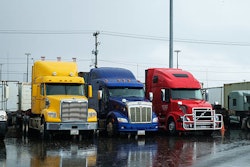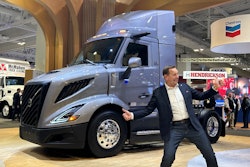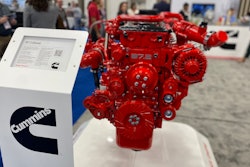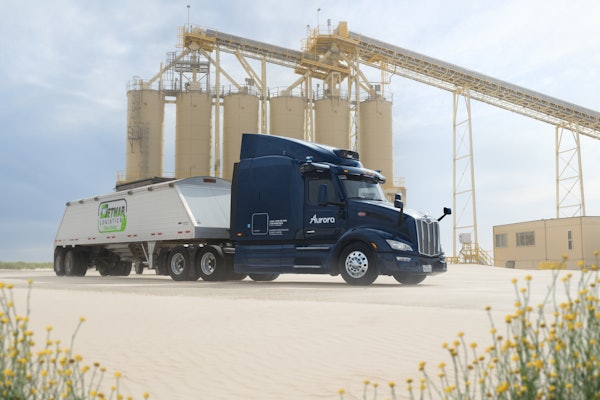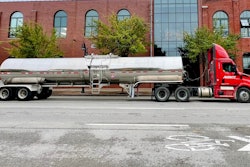My early experiences with parenting involved endlessly watching Thomas the Tank Engine shows, the ones where Ringo Starr and George Carlin were the conductors. I scoured stores for all the characters, secretly feeding my inner child while outwardly supplying my first born with die-cast steam, electric and diesel engines. There are a million memes buried in the Thomas books and shows. The meme stuck in my mind this week is Sir Topham Hatt admonishing Thomas for “causing confusion and delay.”
Those two factors – confusion and delay – cause endless grief at truck OEMs and fleets. Capital investment in things like truck parts factories may require a timeline of a decade or more just to get to the first part or first vehicle. That multi-year timeline often exhausts the patience of venture capitalists who often get antsy when positive cash flow does not occur within three years. Even for professed “fast movers” it can take five or more years to find a site, break ground, design, build and staff a new factory.
Stuff takes time. Just simple things like buying steel for tooling requires the dreaded term “lead time.” Lead times for complex, molded composite parts like truck hoods, cab roofs or doors, are expressed in terms of years from idea to finished, tested, production parts. Complex molded parts like headlamps or dashboards are examples of new vehicle development program pacing components measured in years.
There are many reasons why factories take years to come to fruition, and why products take years to develop. A serial time factor is that those capital investments in factories and part making need to have a viable payback period, again, measured in years.
Payback period is why some designs may not change for years. The longer the life of the product or factory, the better the payback once the capital has been recovered. Think of how long the Volkswagen Beetle product line ran — by some estimates, worldwide, the basic product design was first built in 1938 and the last one rolled of the line in 2003 — 65 years later. I expect some of the part designs on that 2003 VW were tooled decades earlier.
The venerable Peterbilt Model 379 is another example. Some of the parts for that truck were originally designed on vellum. This industry icon was first produced in 1987 and the last one rolled off the line in 2007. The classic Freightliner FLD was introduced in 1987 and ceased production in 2006. The Volvo VNL was introduced in 1996 and was finally retired/updated in 2024.
Changes in customer wants can play a big part in shortening product life. The extensive upgrades in option content and quality of U.S. made pick-up trucks heavily influenced investment in new truck interiors. OEMs heard the voice of the customer that interiors needed to be “more car-like” starting in the 1990s. They also needed to have more modern technology that was starting to be available in cars. Build quality of trucks needed to be on par with the latest autos.
But it is confusion and delay that probably causes the most consternation in product development. Regulations are required to have four year or more lead times between being enacted and becoming adopted. Often these rules are in development for years prior to first being published.
I’ve always been impressed at the ability of the OEMs to innovate solutions. Often, to the casual observer, it may seem that these innovations happen in a year or two. The reality, in most cases, is that the OEMs have been working on designs and testing for years before the rules are officially adopted.
The latest 2027 engines have their seeds in work that started probably a decade ago when the DOE SuperTruck 1 prototypes first ran. This was also when OEMs and industry experts were working with EPA, DOT and DOE officials to flesh out future engine emission rules, future safety rules, future technology timelines, and more.
Lawsuits often throw wrenches into these timelines, causing the OEMs and their fleet customers to plan for multiple possible futures. Lawyers, and the groups that fund them, introduce many variables into capital investment planning for factories and parts.
Politics can greatly impact planning, introducing more confusion and delay. Multi-year research and development programs work best when there are real deadlines. Politics often causes deadlines to shift or change or disappear. The requirement for four years of lead time for rules evolved because of the need for stabilizing investment planning horizons. This was a recognition that technology and production cannot be created instantaneously.
The constant on-again, off-again regulatory environment has plagued the trucking industry for years. OEMs commit to changes and then the changes are modified or postponed.
Rapid shifts in technology also introduce risks to the OEMs and the fleets. An example is the pace of computer chip improvement, which often is much faster than the ability of OEMs to develop, integrate, test and go into series production using those chips. New product development can take years, often the systems that reach production are obsolete by the time they get through development and testing.
Think about designing a proprietary navigation system built into your new truck. The lead time for that new truck might be four or five years to get into production. In five years’ time, in the past, cell phones went from being simple telephones to being smart phones. GPS based navigation became available for free in the palm of everyone’s hands. Five years might see mirrors replaced by cameras. Five years might see autonomous vehicles take over for human driven ones.
OEMs and fleets want stability. Stability does not mean freezing at the status quo. Fleets always want more for less, they want new, better features and functions. They want lower costs. OEMs want more sales, more profits, more cash flow. All those forces require change.
Stability is about having a multi-year planning environment that is written on something more permanent than a napkin. Stability has been elusive in the last decade.
To some extent, instability has been a self-inflicted industry wound. Rather than working to establish consensus, industry and regulators have been all over the map with agreements, disagreements, lawsuits, lobbying activities, policy direction changes, and more.
That elusive stable planning horizon needs to be a group effort or we inevitably cause confusion and delay.




